

Cannabis Vault : Chemistry. Cannabis Chemistryby Erowid THC Material Safety Data Sheet (Occupational Health Services)
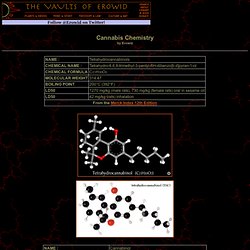
The Science of Cannabis - as an Ally. The Endocannabinoid System: An Osteopathic Perspective. The endocannabinoid system was discovered long after the endorphin system, which was indirectly detected in 1801 when morphine sulfate was isolated from opium.
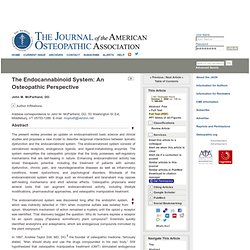
Morphine's mechanism of action remained a mystery until the opioid μ receptor was identified. That discovery begged the question: Why do humans express a receptor for an opium poppy (Papavera somniferum) plant compound? Scientists quickly identified endorphins and enkephalins, which are endogenous compounds mimicked by the plant compound.1 In 1897, Andrew Taylor Still, MD, DO,2 the founder of osteopathic medicine, famously stated, “Man should study and use the drugs compounded in his own body.”
Still hypothesized that osteopathic manipulative treatment (OMT) stimulated endogenous compounds that promoted homeostasis and healing. Because the literature is so voluminous—more than 10,000 cannabinoid citations in PubMed—the present article is not a systematic review. Exogenous Cannabinoids Receptors and Signal Transduction Figure 1. Science for potheads: Why they love to get high. Drug warriors have long tried to smear marijuana as a dangerous scourge, seeking to criminalize possession of a leaf they clearly do not understand.
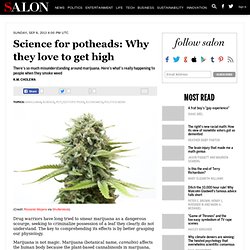
The key to comprehending its effects is by better grasping our physiology. Marijuana is not magic. Marijuana (botanical name, cannabis) affects the human body because the plant-based cannabinoids in marijuana, once ingested, can “plug into” the cannabinoid receptors that are used by the cannabinoids made by our own bodies. It’s not just people that have cannabinoid systems. All mammals have them. Evolution has selected for cannabinoid systems, meaning once they emerged, they were retained, and broadly adopted.
The cannabinoid receptor seems to have first appeared approximately 600 million years ago in sea squirts. A sea squirt is a tunicate, and tunicates contain a host of potentially useful chemical compounds that are effective against various types of cancer. Prior to 580 million years ago, life forms were simple. Tetrahydrocannabinol. Tetrahydrocannabinol (THC) is the active chemical in cannabis and is one of the oldest hallucinogenic drugs known.
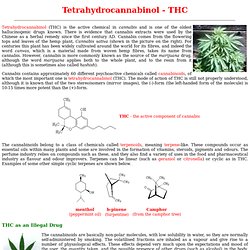
There is evidence that cannabis extracts were used by the Chinese as a herbal remedy since the first century AD. Cannabis comes from the flowering tops and leaves of the hemp plant, Cannabis sativa (shown in the picture on the right). For centuries this plant has been widely cultivated around the world for its fibres, and indeed the word canvas, which is a material made from woven hemp fibres, takes its name from cannabis.
However, cannabis is more commonly known as the source of the marijuana drug, although the word marijuana applies both to the whole plant, and to the resin from it (although this is sometimes also called hashish). Cannabis contains approximately 60 different psychoactive chemicals called cannabinoids, of which the most important one is tetrahydrocannabinol (THC). The cannabinoids belong to a class of chemicals called terpenoids, meaning terpene-like. Tetrahydrocannabinol. Tetrahydrocannabinol (THC), or more precisely its main isomer (−)-trans-Δ9-tetrahydrocannabinol ( (6aR,10aR)-delta-9-tetrahydrocannabinol), is the principal psychoactive constituent (or cannabinoid) of the cannabis plant.
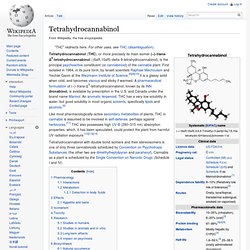
First isolated in 1964, in its pure form, by Israeli scientists Raphael Mechoulam and Yechiel Gaoni at the Weizmann Institute of Science,[8][9][10] it is a glassy solid when cold, and becomes viscous and sticky if warmed. A pharmaceutical formulation of (−)-trans-Δ9-tetrahydrocannabinol, known by its INN dronabinol, is available by prescription in the U.S. and Canada under the brand name Marinol. An aromatic terpenoid, THC has a very low solubility in water, but good solubility in most organic solvents, specifically lipids and alcohols.[6] Tetrahydrocannabinol with double bond isomers and their stereoisomers is one of only three cannabinoids scheduled by Convention on Psychotropic Substances (the other two are dimethylheptylpyran and parahexyl).
Pharmacology[edit]